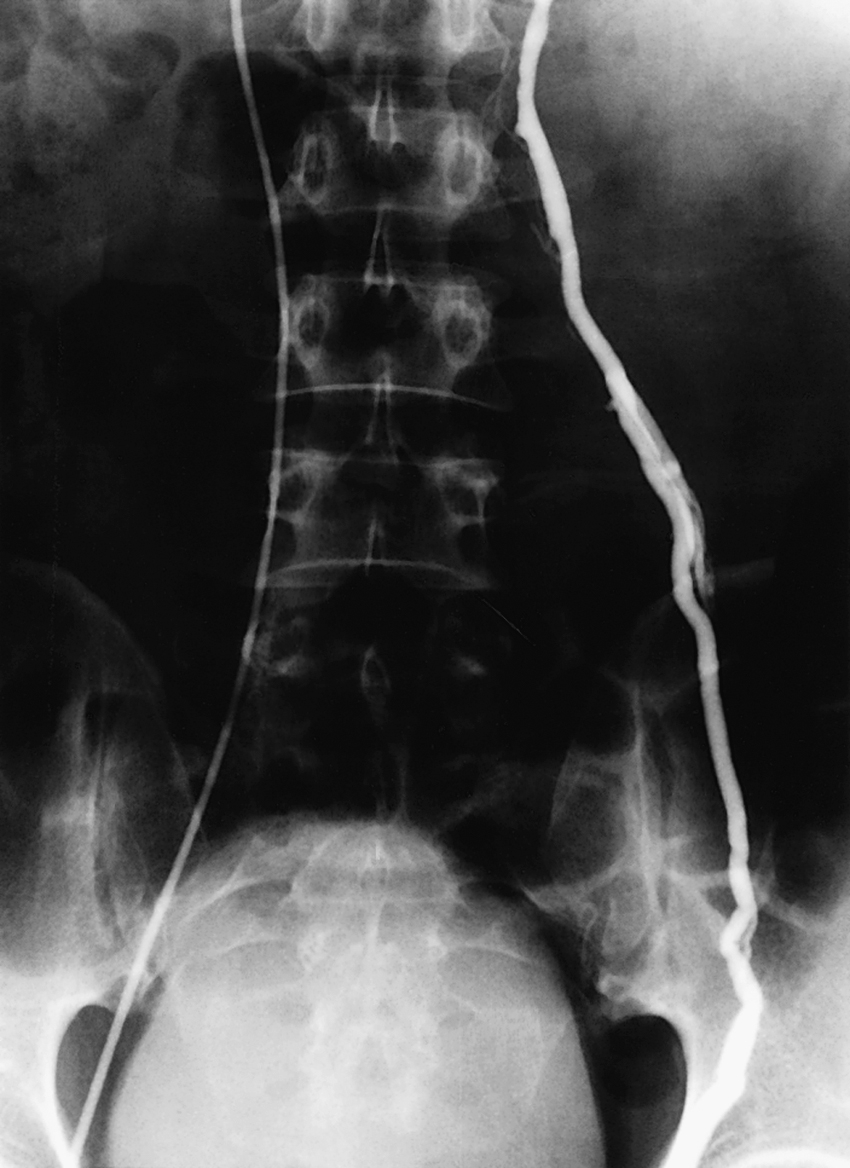Physical Address
304 North Cardinal St.
Dorchester Center, MA 02124
The authors wish to acknowledge authors Ali Albayati, Emily M. Tanski, and Emily J. Timmreck, who contributed to this chapter in the second edition.
Although relatively uncommon, male varicocele often affects otherwise healthy men with symptoms such as pain and infertility. The concept of treating a male varicocele was first developed by Dr. Paré in the 16th century, primarily to treat symptoms such as pain and swelling. The British surgeon Dr. Barfield first proposed a link between male infertility and varicoceles in the 19th century. In recent years, research has suggested a strong association with men who have symptomatic varicoceles and infertility. Today, interventional radiology offers a minimally invasive catheter-directed approach to embolize varicoceles. This chapter reviews the diagnosis, etiology, treatment indications, and techniques of managing the male varicocele.
Varicocele is most commonly diagnosed in the adult male population at a rate between 15% and 17%. The condition occurs in less than 1% in boys younger than age 10 and then plateaus at 15% in late adolescence. Approximately 90% of varicoceles occur on the left side. The remaining 10% occur bilaterally. Gat et al. found an unusually high incidence of bilateral varicoceles (80.7%; 210 of 255) in infertile men with varicoceles, but only 21 of 210 (10%) right-sided varicoceles were palpable. The incidence of unilateral right-sided varicocele is 0.4%. The finding of an isolated right-sided varicocele warrants further evaluation. It can be associated with situs inversus, as well as with retroperitoneal and abdominal tumors such as lymphoma and metastases. .
Varicocele diagnosis is primarily made by clinical presentation and physical exam. The simple grading system of Dubin and Amelar is most commonly used: grade 0, not palpable; grade 1, palpable only with the patient standing and performing a Valsalva maneuver; grade 2, palpable without a Valsalva maneuver; and grade 3, visually apparent.
High-resolution real-time ultrasound and color flow Doppler ultrasound may be used to either confirm the diagnosis or detect subclinical (nonpalpable) varicoceles. The significance of subclinical varicocele with regard to infertility is currently controversial. Doppler ultrasound may further distinguish between types of varicoceles and their blood flow characteristics. Because only palpable varicoceles have been documented to be associated with infertility, the Report on Varicocele and Infertility (published jointly by the Male Infertility Best Practice Committee of the American Urological Association and the Practice Committee of the American Society for Reproductive Medicine, September 2004) recommends that routine evaluation of infertile men with varicoceles include a medical and reproductive history, physical examination, and a minimum of two semen analyses, but imaging studies are indicated only if the physical exam is inconclusive.
Spermatic venography is another imaging technique. It is generally reserved for venous mapping in preparation for transcatheter embolotherapy or surgical ligation ( Fig. 46.1 ).

Varicocele is seen in about 40% of men seeking evaluation for infertility. There is some controversy regarding the causal relationship of varicocele and infertility (e.g., 85% of men with varicoceles are fertile, and reports of improvement in pregnancy rate are inconsistent ). Significant evidence in the literature supports the hypothesis that varicoceles have a negative effect on the testis and fertility and that varicocele repair can reverse or prevent these effects.
In a prospective trial, Laven et al. randomized 67 young adults with varicoceles to treatment (percutaneous embolotherapy) and nontreatment groups; 21 healthy male volunteers without varicoceles served as controls. One year after treatment, left testis volumes were measured and found to be comparable with those of the control group and significantly different (larger) ( P < .001) from the untreated group. Semen quality (sperm concentration) increased significantly ( P < .01) in the treated group and was unchanged in the untreated and control groups.
The three primary indications for treatment of a varicocele are (1) subfertility or infertility in adult men, (2) varicocele and testicular atrophy in adolescent or pediatric patients, and (3) pain. Recurrence of varicocele after surgical ligation is also an indication. The most common indication for treatment of a varicocele in an adult male is infertility/subfertility. Criteria for treatment in this group should include (1) abnormal semen parameters, (2) absence of any other identifiable or correctable causes of male infertility, and (3) a female partner with normal fertility or treated infertility. Adult men with a palpable varicocele and abnormal semen analysis but who are not currently attempting to conceive should also be offered varicocele repair. Adolescents and young men with a varicocele but a normal-sized ipsilateral testicle or normal semen analysis, or both, should be offered annual follow-up monitoring.
Become a Clinical Tree membership for Full access and enjoy Unlimited articles
If you are a member. Log in here